Is It Still Okay to Wear Camo?
In these troubled political times, I fear the print now evokes an insurrectionist vibe I'd like to avoid.
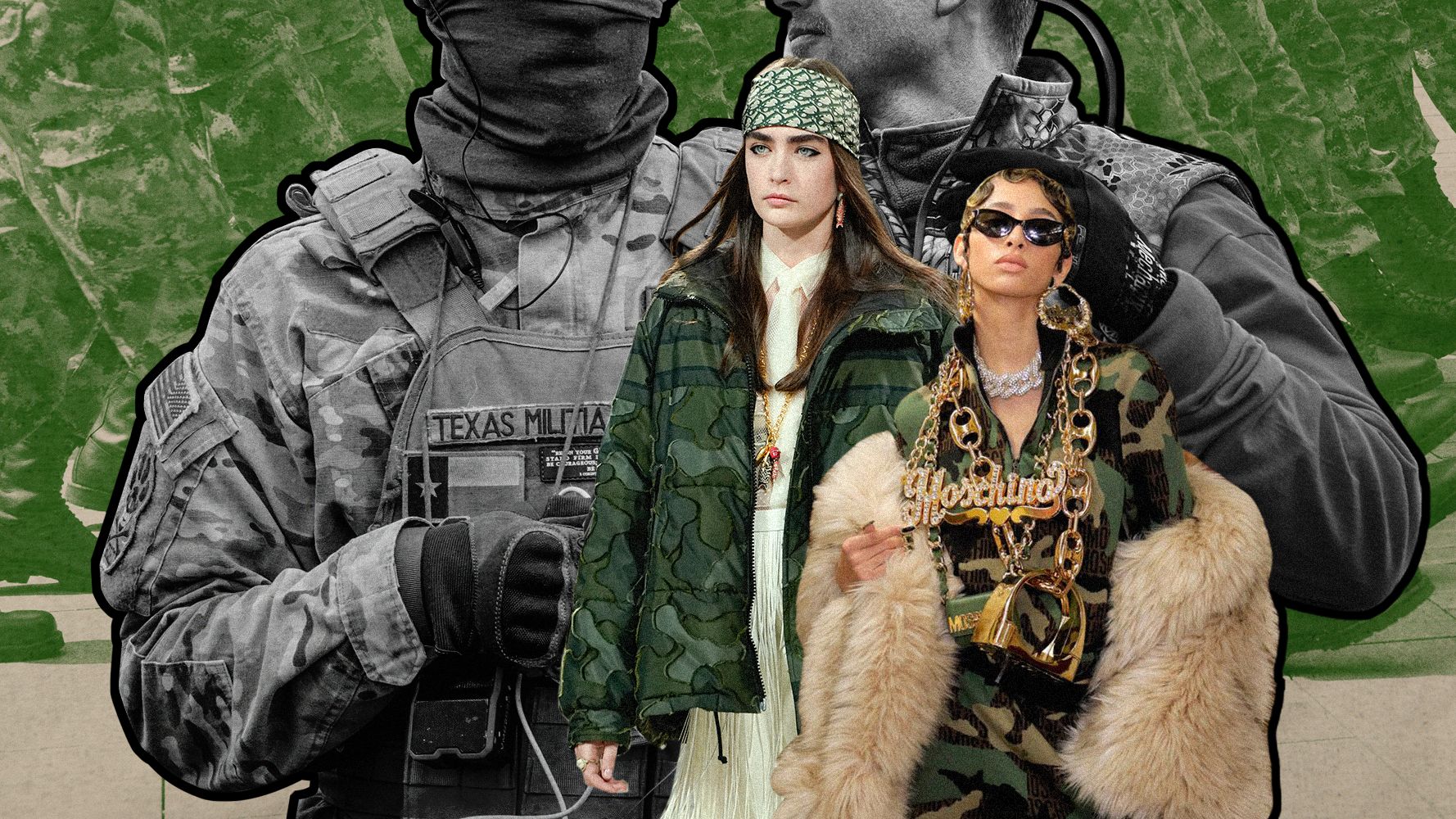

During the most recent impeachment trial of the former president, Rep. Jamie Raskin, D-Maryland, showed side-by-side photos of the April 2020 Michigan State Capitol attackers and the January 6 U.S. Capitol rioters. He said: “This Trump-inspired mob may indeed look familiar to you—Confederate battle flags, MAGA hats, weapons, camo army gear—just like the insurrectionists who showed up and invaded this chamber on January 6.” Soon after, The Late Show host Stephen Colbert aired said impeachment footage and quipped “...prompting UsWeekly to ask ‘Who treasoned it better?’ ”
Trump followers, including the Capitol rioters, have boldly worn explicitly hate-filled symbols referring to the Holocaust or Confederate flags. In a Fast Company article explaining the symbolism of some of the protesters’ clothing, Elizabeth Segran quoted Robert Sanders, a retired U.S. Navy judge and a national security professor at the University of New Haven. He called out camouflage prints, saying that by wearing camo the rioters “are trying to say they are warriors for the white race.” However, Segran wrote, “not everyone who wears camouflage is in a militia.”
This all got me wondering (cue Carrie Bradshaw–style voiceover): After the Capitol insurrection, is it okay to wear camo?
Camo as High-Fashion
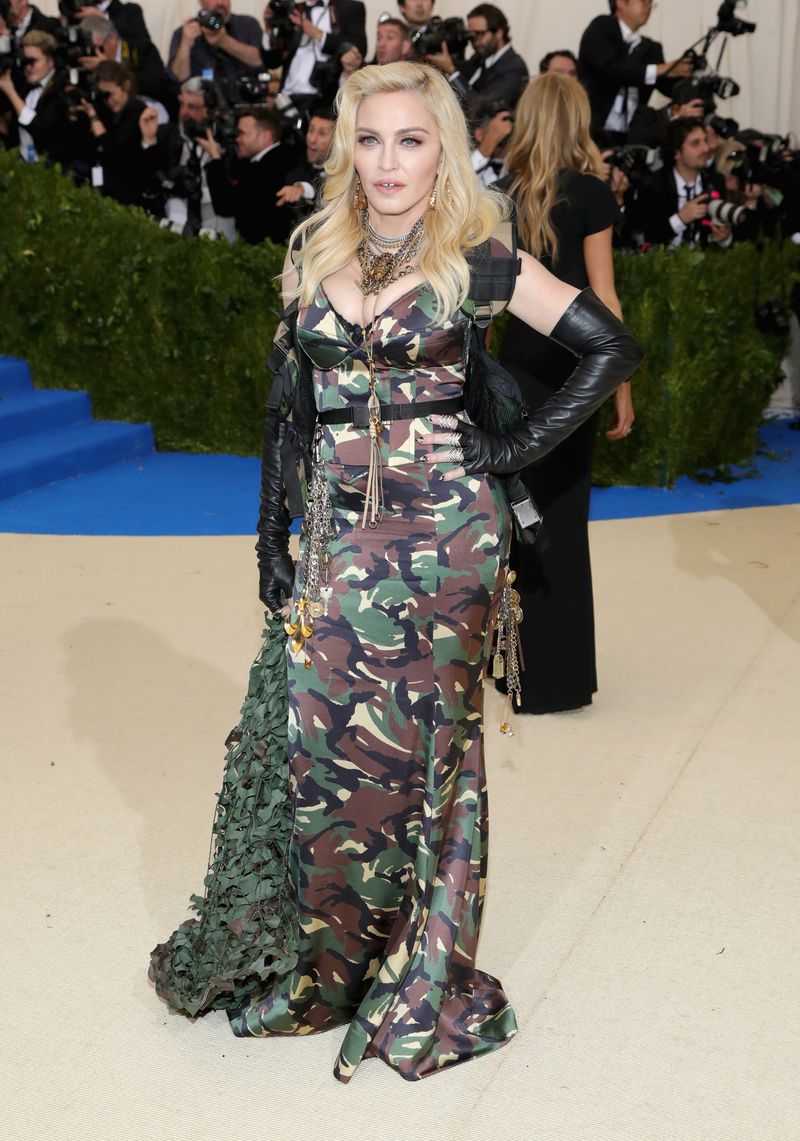
Moschino
Madonna at the Met Gala in a Jeremy Scott–designed camo gown on May 1, 2017 in New York City.
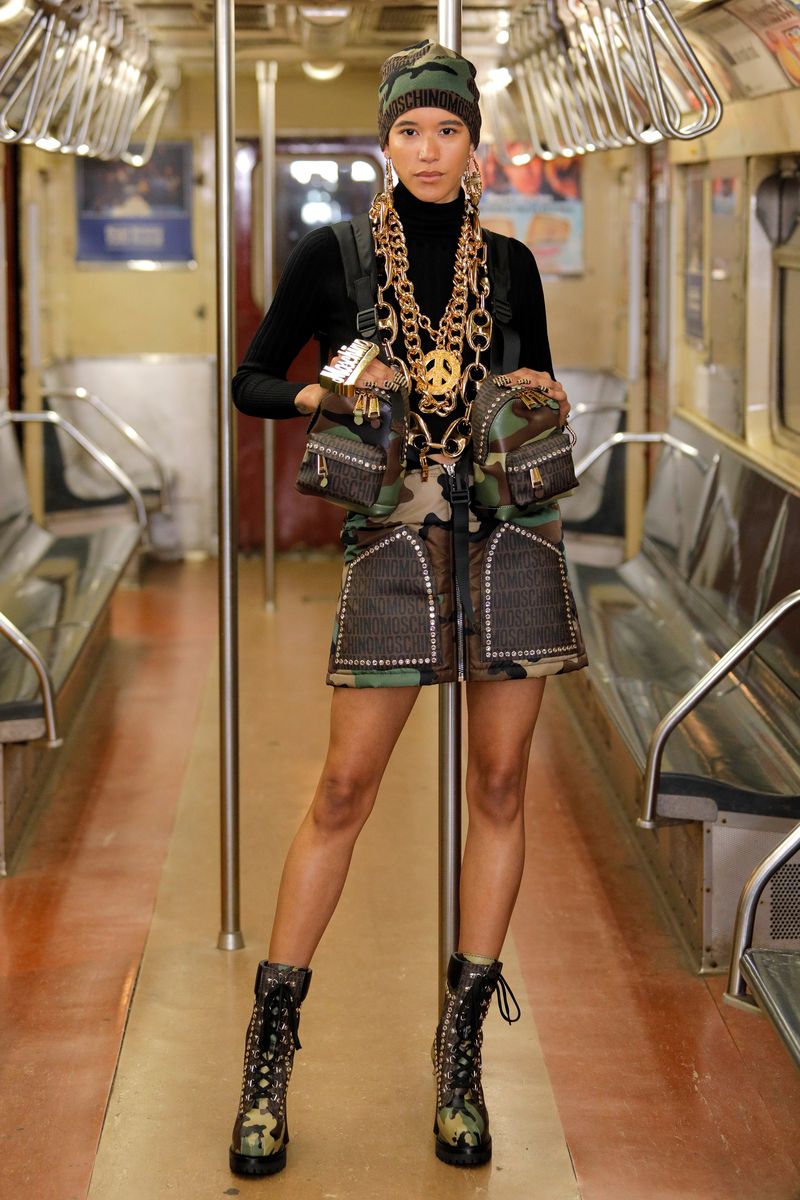
Moschino
A camo mini and combat boots at the Moschino Prefall 2020 runway show in Brooklyn on December 9, 2019.
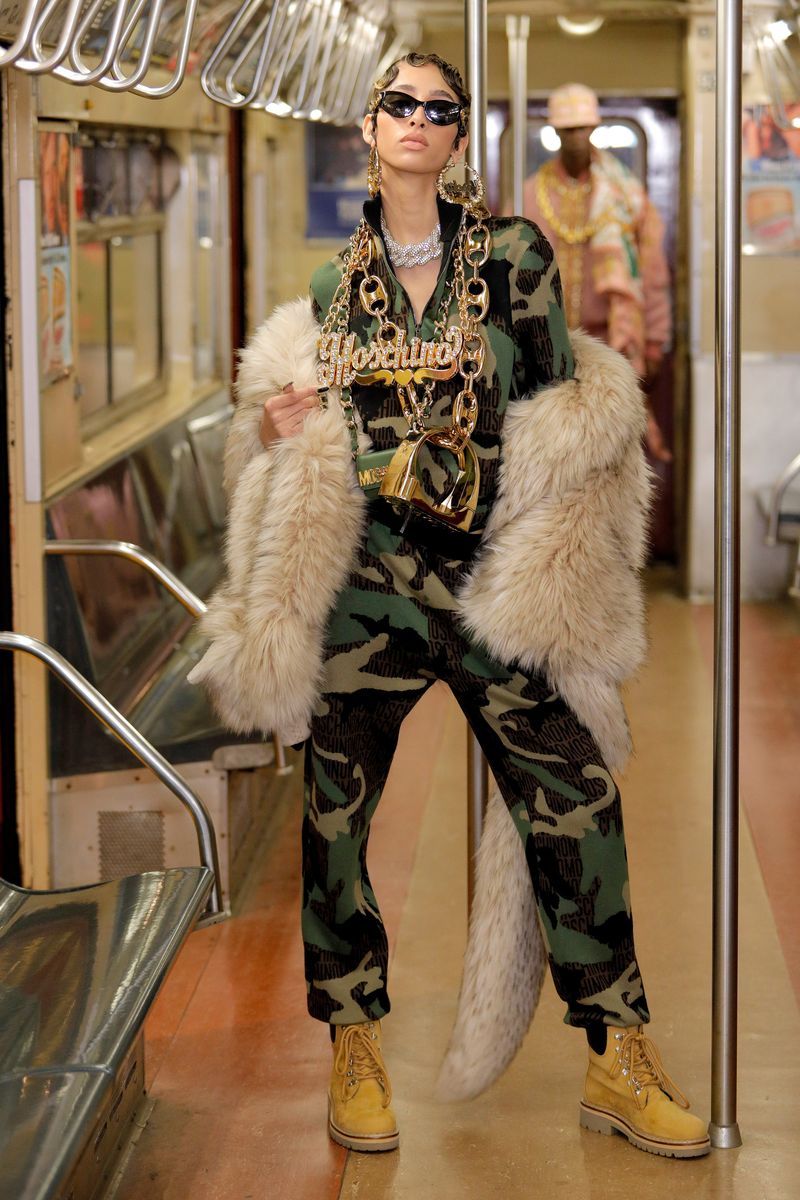
Moschino
A camo jumpsuit at the Moschino Prefall 2020 runway show in Brooklyn on December 9, 2019.
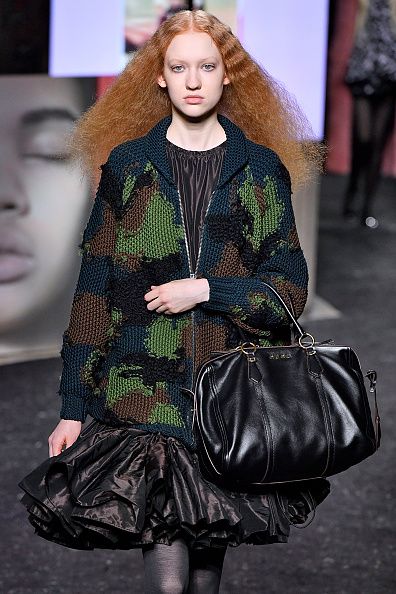
Miu Miu
A deconstructed camo pattern on the runway at Miu Miu Ready to Wear Fall/Winter 2019/2020 in Paris.
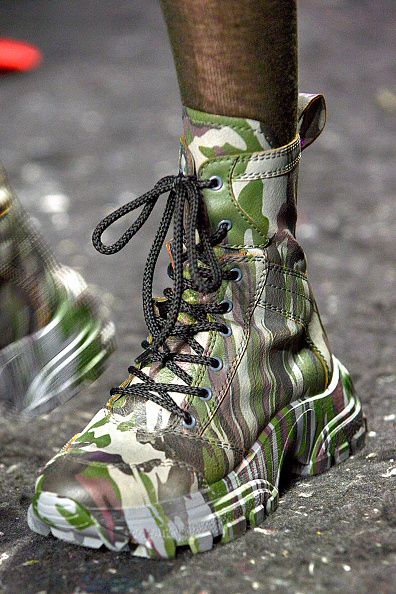
Miu Miu
Updated combat boots at the Miu Miu Ready to Wear fashion show at Paris Fashion Week Fall/Winter 2019/2020 on March 5, 2019.
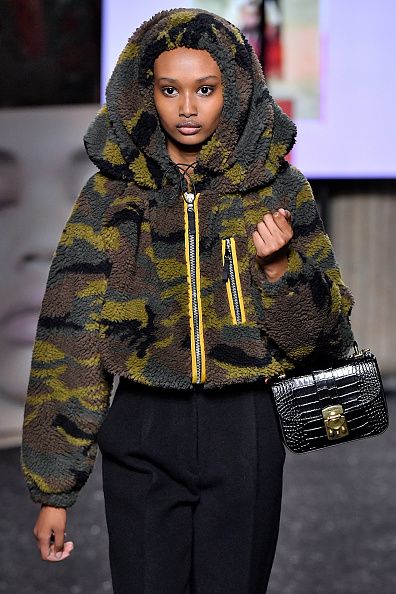
Miu Miu
A cowl-like, short hoodie at the Miu Miu Ready to Wear Fall/Winter 2019/2020 fashion show in Paris on March 5, 2019.
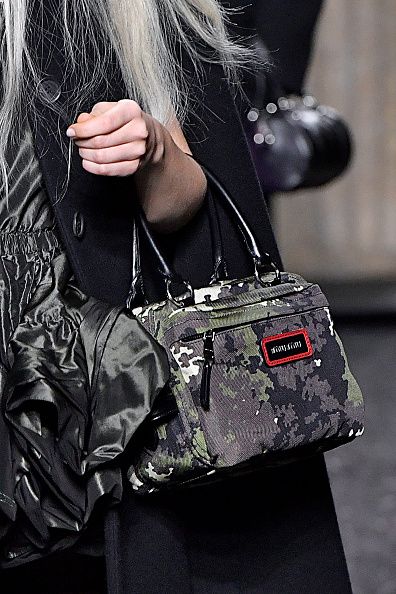
Miu Miu
Even the purses are camo at the Miu Miu Ready to Wear Fall/Winter 2019/2020 fashion show in Paris on March 5, 2019.
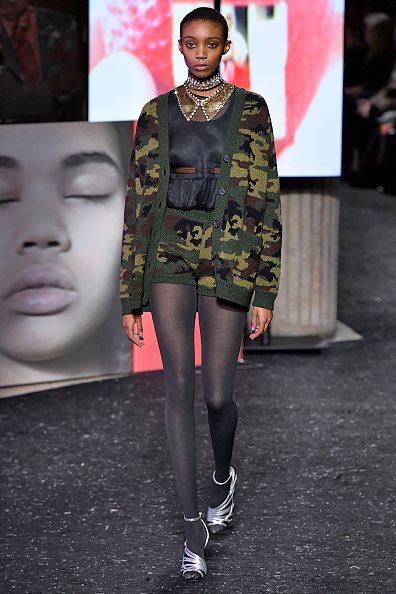
Miu Miu
Camo every-which-way: Here in a knit shorts and cardi set at the Miu Miu Ready to Wear Fall/Winter 2019/2020 fashion show in Paris on March 5, 2019.
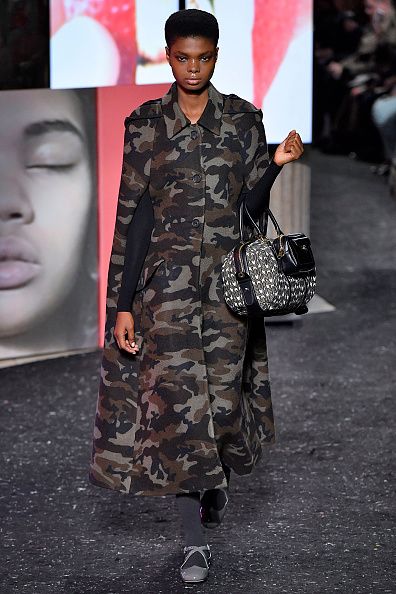
Miu Miu
A dark camo cape at Miu Miu Paris Fashion Week Fall/Winter 2019/2020 on March 5, 2019.
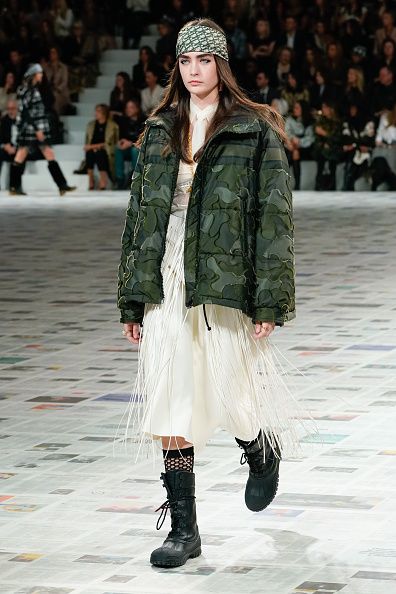
Dior
A camo coat on the Dior runway during Paris Fashion Week Fall/Winter 2020/2021 on February 25, 2020.
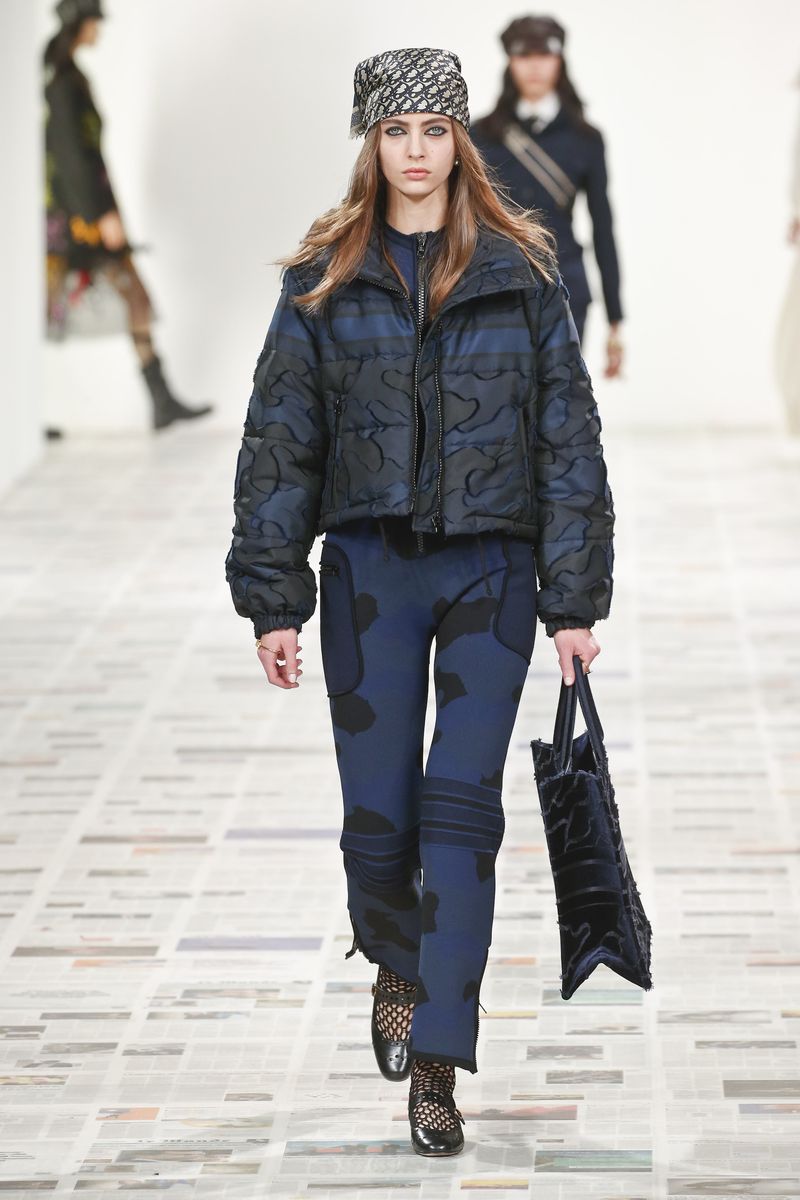
Dior
Dark blue camo on the Dior runway during Paris Fashion Week Fall/Winter 2020/2021 on February 25, 2020.
Camo has been on heavy rotation in my WFH wardrobe: an easy cashmere sweatshirt, soft camo slippers, and holds-you-in-but-stretchy leggings. (Note: I do not—usually—wear them all at once.) Camouflage was developed by the military to allow hunters/soldiers/tanks/battleships to get closer to or go unnoticed by prey/enemies. Patterns and hues are based on the environments where they’re worn, including sandy deserts and leafy forests. The prints—from high street to high fashion to the real deal—come in a variety of colors: dark blue, neon, pastel pink, or standard green (which is known as "MARPAT Woodland"). Actual military types wear camo to blend in to their surroundings (it obscures the human silhouette), but I find that in civilian life a little camo detailing actually elevates an otherwise boring outfit.
I am not a white supremacist or a Capitol rioter. I reject their racist and reprehensible views. Nor am I ex-military or a hunter. In summary: I have no functional reason to wear camouflage. When I wear camo, the only statement I’m making is: “My basic-black NYC magazine editor (but not fashion editor!) wardrobe of so-called timeless classics is boring and I need some pizzaz.” (FWIW, I am also saying: “I’m kind of messy and spill a lot, and camo prints—as well as tie-dye—are my friends.”)
Admittedly, since Trump’s ascendence, I would never, ever wear a red baseball cap with or without the actual scarlet letters. Red baseball caps, because of their Trumpian connotation, are now a no-no for many people. Robin Givhan summed it up in The Washington Post: “The red hat has become a symbol of us vs. them, of exclusion and suspicion.” Is the same to be said about camo? I most certainly would not want people to think I’m some kind of White Power follower when they see me sporting my favorite sweatshirt.
(It’s worth noting: Reporters commented on the members of the Capitol crowd wearing “tactical gear.” This does not necessarily equal camouflage. Tactical clothing and accessories are produced to outfit the military and law enforcement, according to noted fashion blog TheUSMarines.com. This includes vests with tons of pockets, steel-toe boots, backpacks, utility belts, and gadgets like night-vision goggles and killer pens. Laws regulate some of this—e.g. body armor, in some states, cannot legally be bought by convicted felons. Going into the 2020 election, the doomsday prepper vibe was popular, and business was booming.)
Stay In The Know
Get exclusive access to fashion and beauty trends, hot-off-the-press celebrity news, and more.
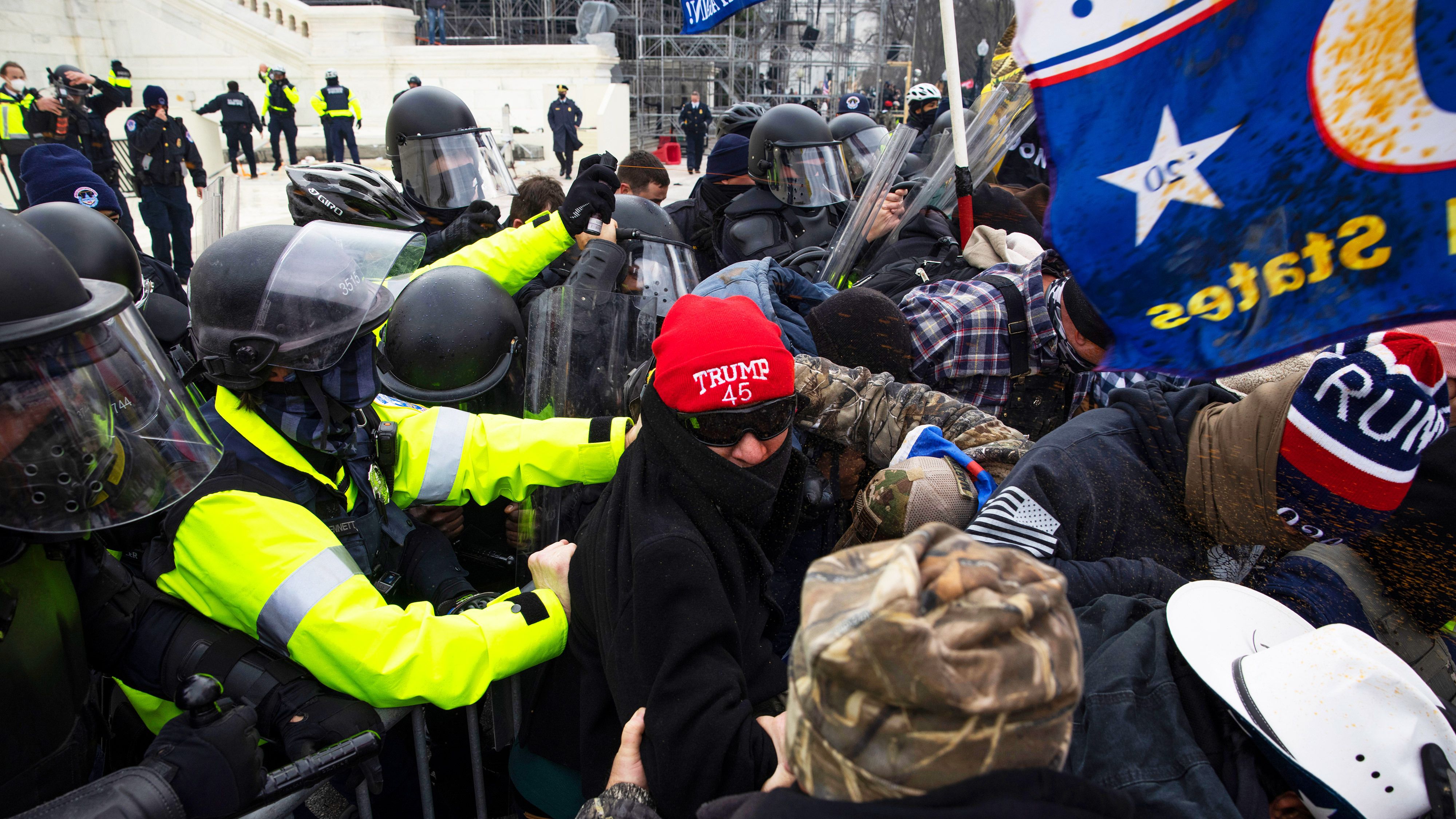
Trump supporters clad in camo clashed with police at the Capitol on January 6.
I turned to a few experts. I started with Vanessa Friedman, the chief fashion critic of The New York Times. Read her column for a history of high-fashion military apparel and a thoughtful dissertation on what it means to wear camo. The short answer is: Madonna can wow in a Jeremy Scott camo ballgown at the Met Gala, but maybe, as a civilian, I should avoid items like camo cargo pants that might be mistaken for military gear. For further consideration: In her “Open Thread” newsletter, Friedman quoted a reader’s response to my original “Ask Vanessa” question. The commenter, a veteran, wrote that wearing camo for fashion’s sake alone was “horribly disrespectful” and “akin to stolen valor.” The reader added, “The only exception I can think of is if a vet gives a jacket or such piece as a memento to a family member. Even then, we were instructed that insignia and medals should be removed as the giftee did not earn them.” It is heartbreaking to me that my wearing camo would be disturbing to someone who has valiantly served our country.
I got a second opinion from a relative who is a retired Marine (typically terse, he prefers to remain anonymous): “I think it’s okay to wear camo,” he writes in an email. “I even think it is a compliment to the people that have to wear it every day.” He adds, “However, I draw the line at civilians wearing the rank insignia or unit patches on their camo clothes. Soldiers work very hard to rise in rank or join elite units and when civilians wear them it trivializes the accomplishment.”
I turned next to Marie Claire fashion editors Joseph Errico and Julia Gall for their opinions on the cancellation of camo. Their take: Many items of military attire have become separated from their functional origins. “Bomber jackets, aviators, army-green military jackets—all are part of the American fashion identity now,” Gall says. “It’s so beyond classic, it transcends fashion. And it does trickle down in so many ways—that’s why it’s so democratic. It’s like jeans: ubiquitous now.”
“I don’t think if you saw Julia Gall walking down the street in Junya Watanabe camo, you’d think she started an insurrection,” adds Errico. “It’s all about the context. I don’t know if camo necessarily conflates a person’s ideology with MAGA and the Far Right. If you’re wearing camo and stilettos, I think you’re ok.”

Bella Hadid at JFK Airport in NYC in 2019.
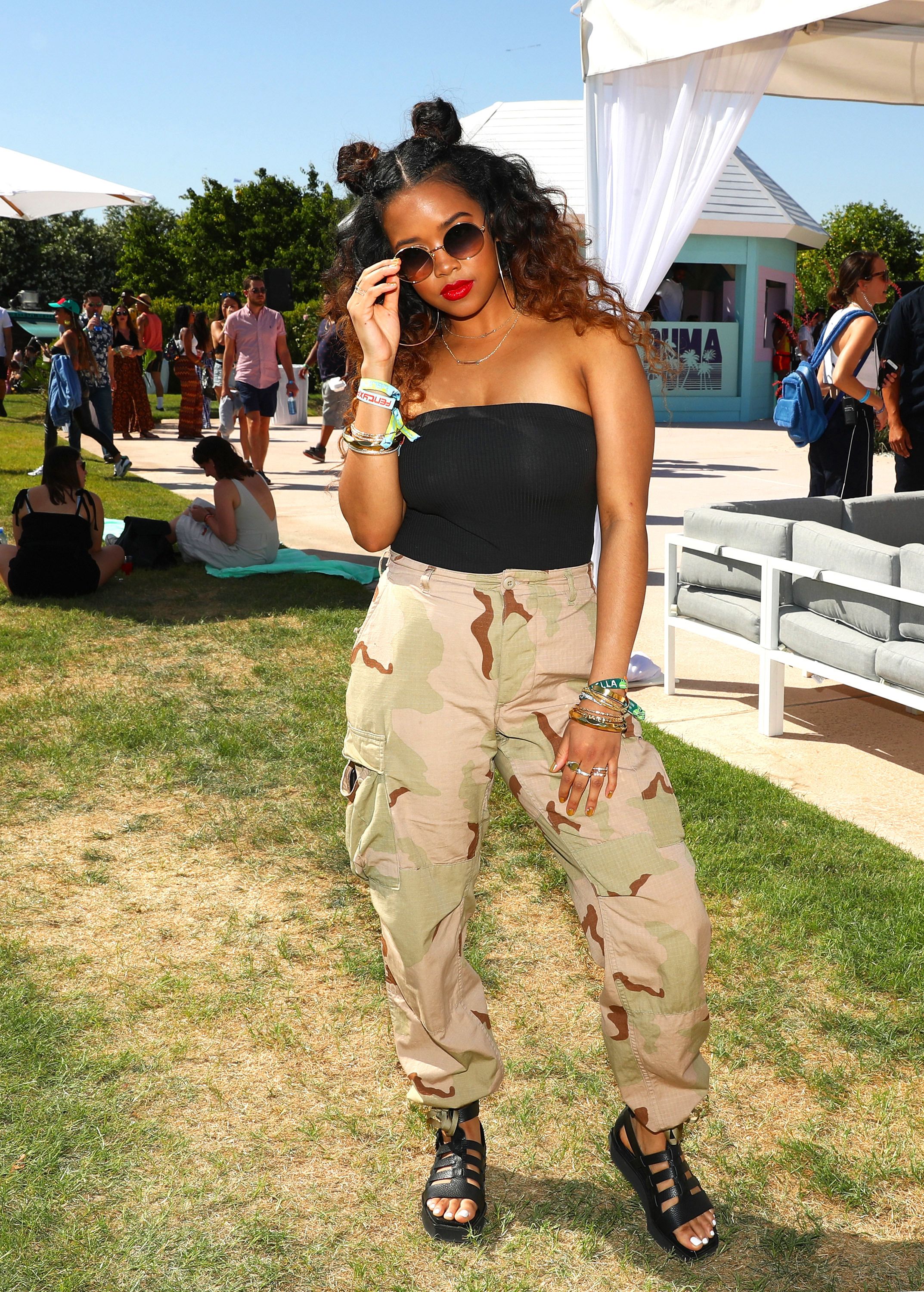
H.E.R. at Coachella in 2018
I then reached out to the maker of that luxe sweatshirt I've been wearing to rags. “Camo has been an important part of fashion for decades, as have other elements originally inspired by military uniforms," wrote Catherine Morrissey, president of White + Warren, in an email. Like animal prints and a simple stripe, camo “is a fantastic non-print print that functions like a neutral. It adds interest without being overpowering.” It also sells like hotcakes—“the sweatshirt sold out twice last year,” Morrissey notes.
So, are there fashion insiders giving up camo? “I used to work Doc Martens and camouflage [from the Army Navy store] when I was a young gay kid, but it didn’t mean that I was a skinhead, for sure,” says Tom Scott, assistant professor of fashion design at Fashion Institute of Technology. But the reason to give up camo now is because it has been tainted by “this terrible moment of American history, right?” he posits, answering himself with, “I don’t think the White Power people get to appropriate something iconic like camouflage that’s already worn by many different types of people and has been worked into street style for decades. They don’t get to take that pattern and make it mean what they want it to mean.”
For the last word, I contacted famed costume designer Patricia Field (The Devil Wears Prada, Emily in Paris, and Sex and the City). “As of late, I find myself questioning the white supremacist association,” she admits. But she has been wearing camouflage for a long, long time, and, she says, “I do confess that I haven’t stopped.”
In the end, I’m still conflicted. I’m a pacifist and not a fashionista. I love comfort and want to add some edgy chic with minimal effort. I also respect my family members and ancestors who have served everywhere from Fallujah to the Argonne Forest to San Juan Hill to Chickamauga to the Revolution. In conclusion, I’ve decided to follow the lead of Field, one of the great style legends of our time, and continue wearing camo—as fashion, yes, but also as homage.

RELATED STORY

Maria Ricapito is a writer who lives in the Hudson Valley.
-
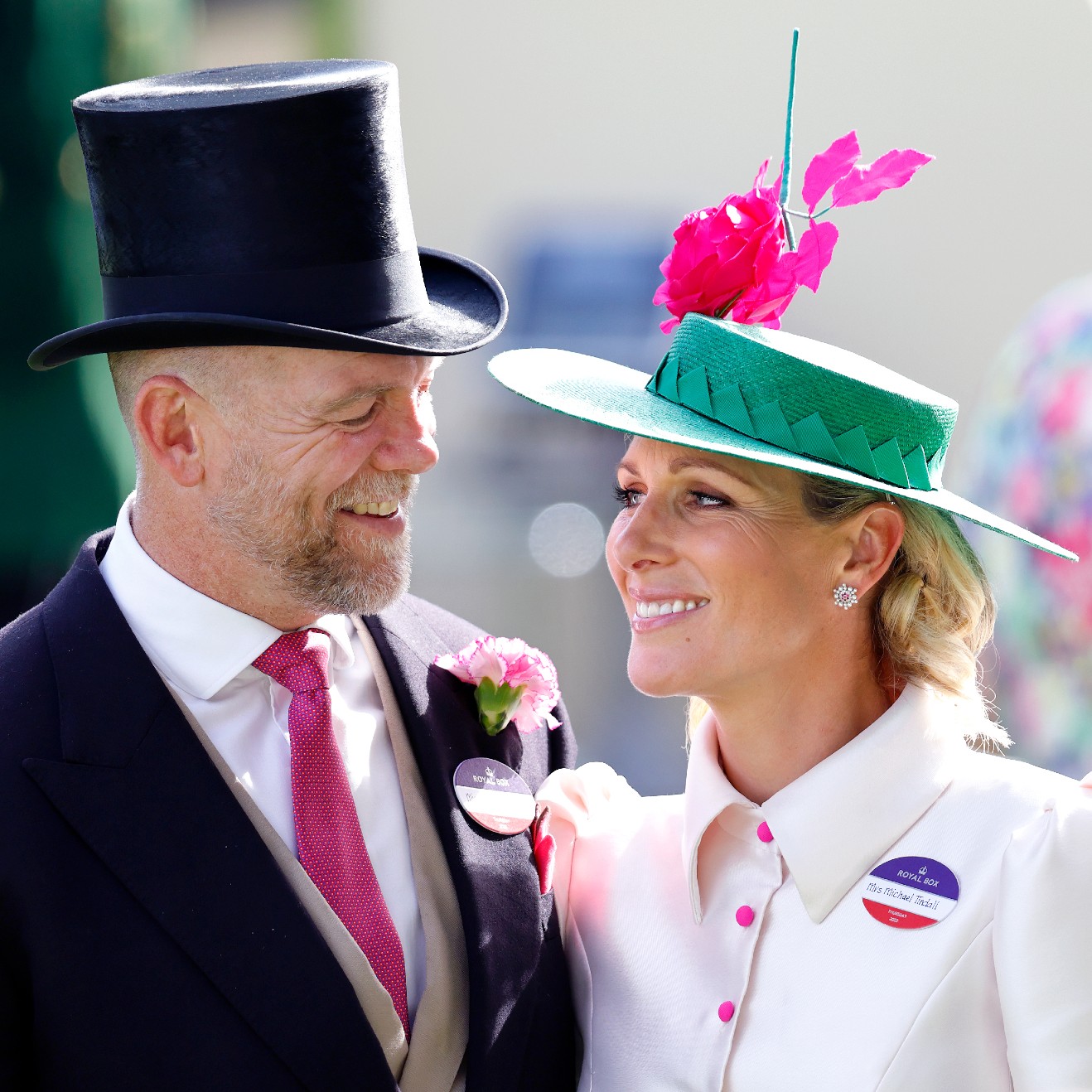 Princess Anne's Unexpected Suggestion About Mike Tindall's Nose
Princess Anne's Unexpected Suggestion About Mike Tindall's Nose"Princess Anne asked me if I'd have the surgery."
By Amy Mackelden Published
-
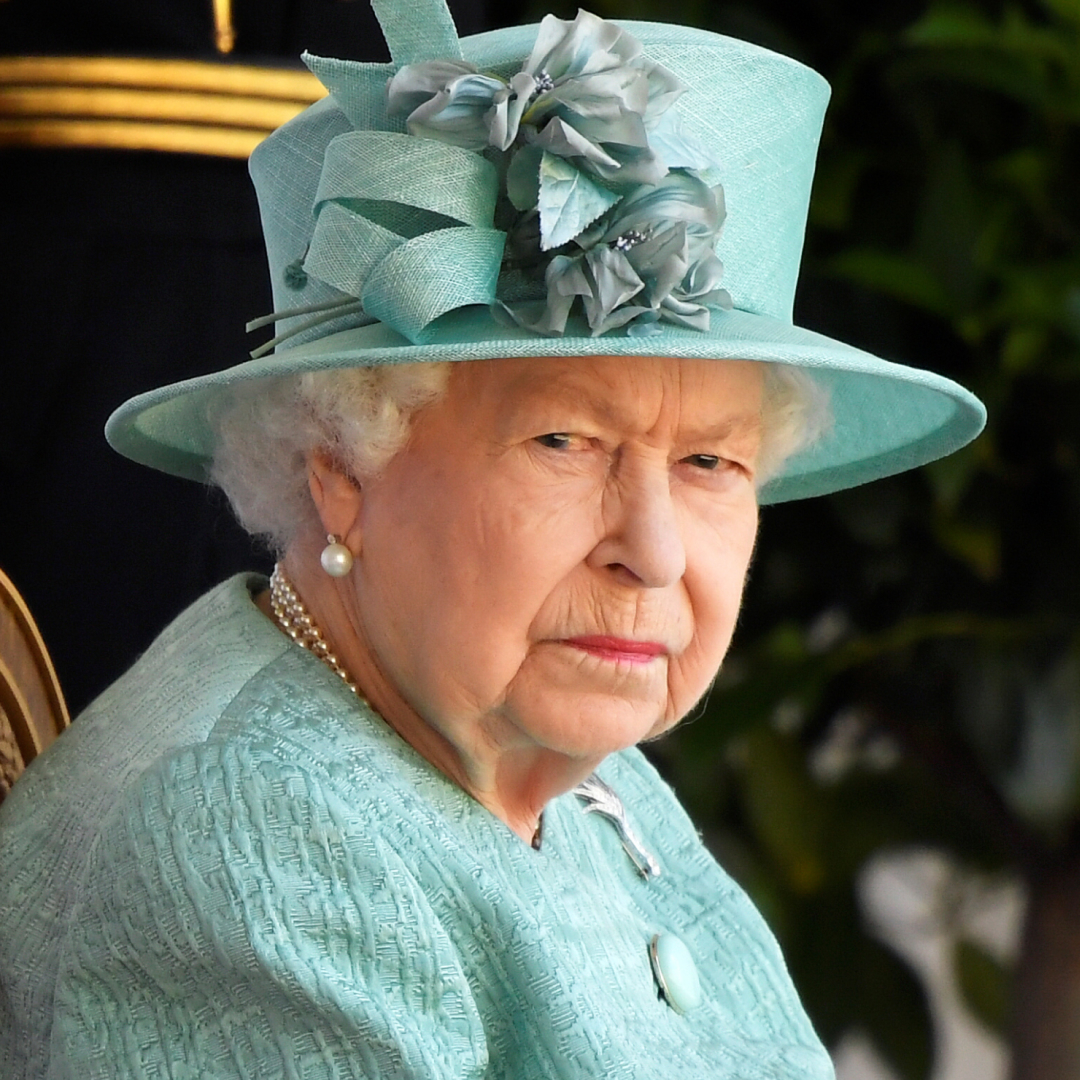 Queen Elizabeth's "Disapproving" Royal Wedding Comment
Queen Elizabeth's "Disapproving" Royal Wedding CommentShe reportedly had lots of nice things to say, too.
By Amy Mackelden Published
-
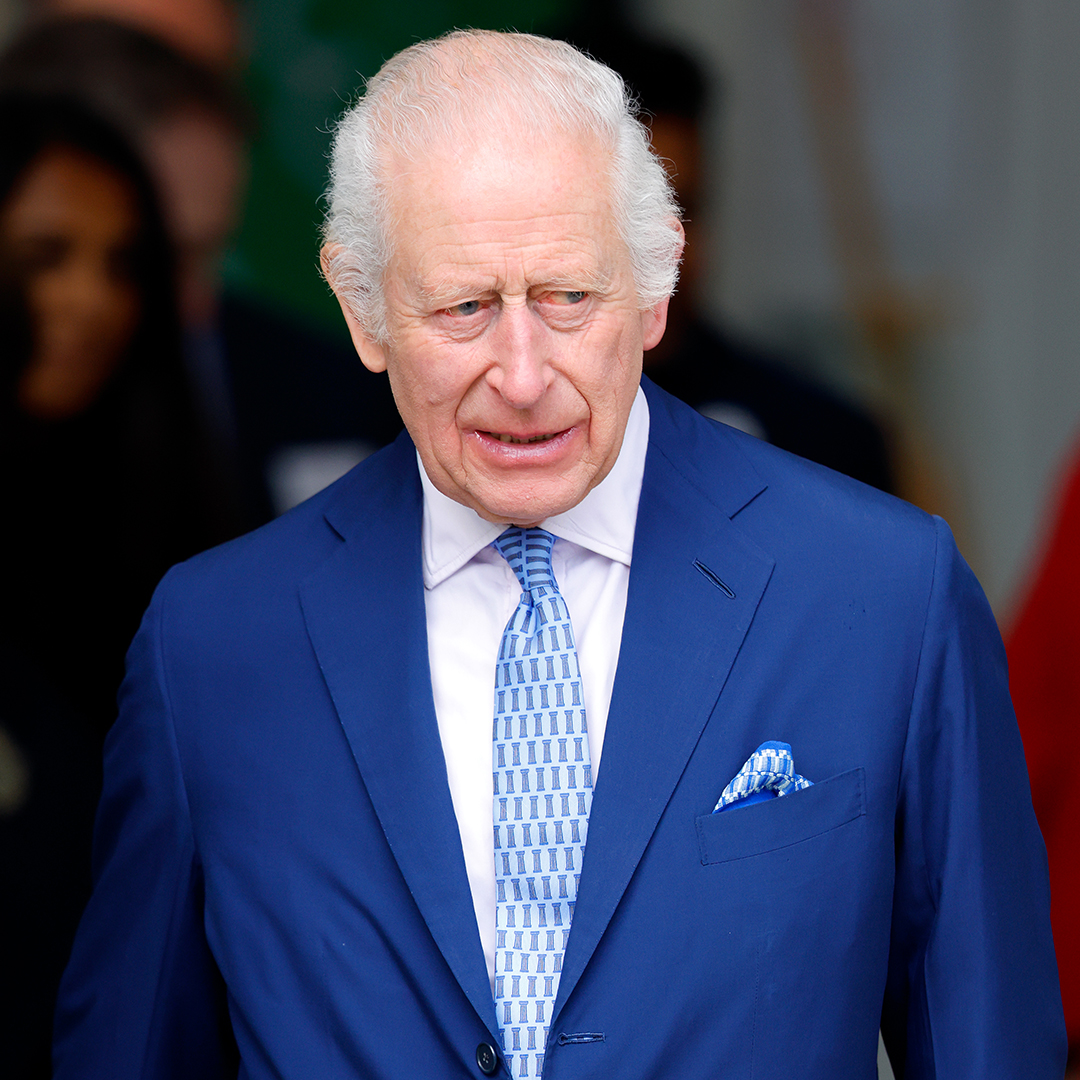 Palace Employees "Tried" to Get King Charles to "Slow Down"
Palace Employees "Tried" to Get King Charles to "Slow Down""Now he wants to do more and more and more. That's the problem."
By Amy Mackelden Published
-
 Florence Pugh Is the Lingerie Dressing Trend's Poster Girl in a See-Through Stella McCartney Mini Dress
Florence Pugh Is the Lingerie Dressing Trend's Poster Girl in a See-Through Stella McCartney Mini DressShe loves a see-through look.
By Lauren Tappan Published
-
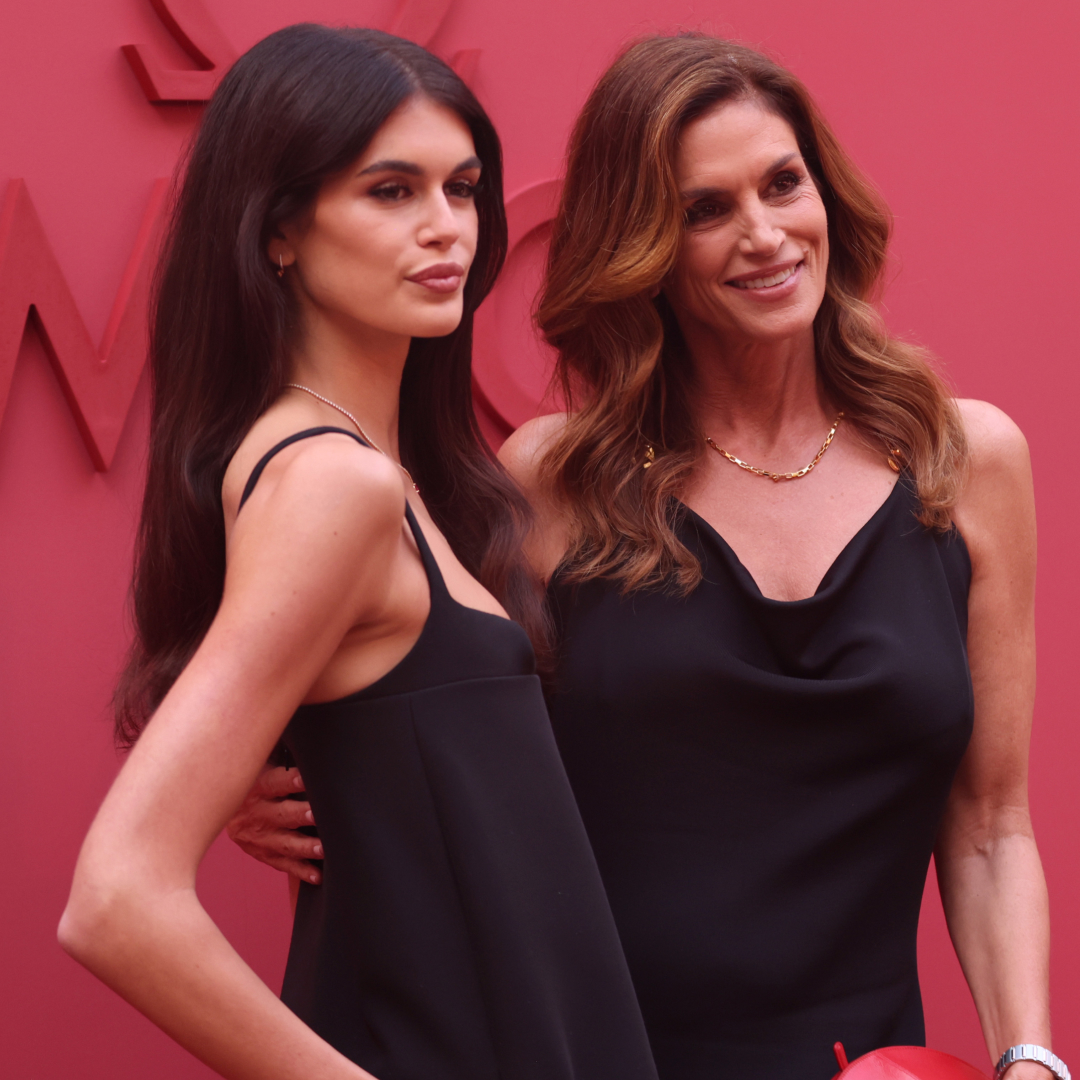 Cindy Crawford and Kaia Gerber Match in Little Black Dresses With Individual Twists
Cindy Crawford and Kaia Gerber Match in Little Black Dresses With Individual TwistsThe two looked nearly identical while attending the Broadway premiere of ‘Good Night, and Good Luck.’
By Lauren Tappan Published
-
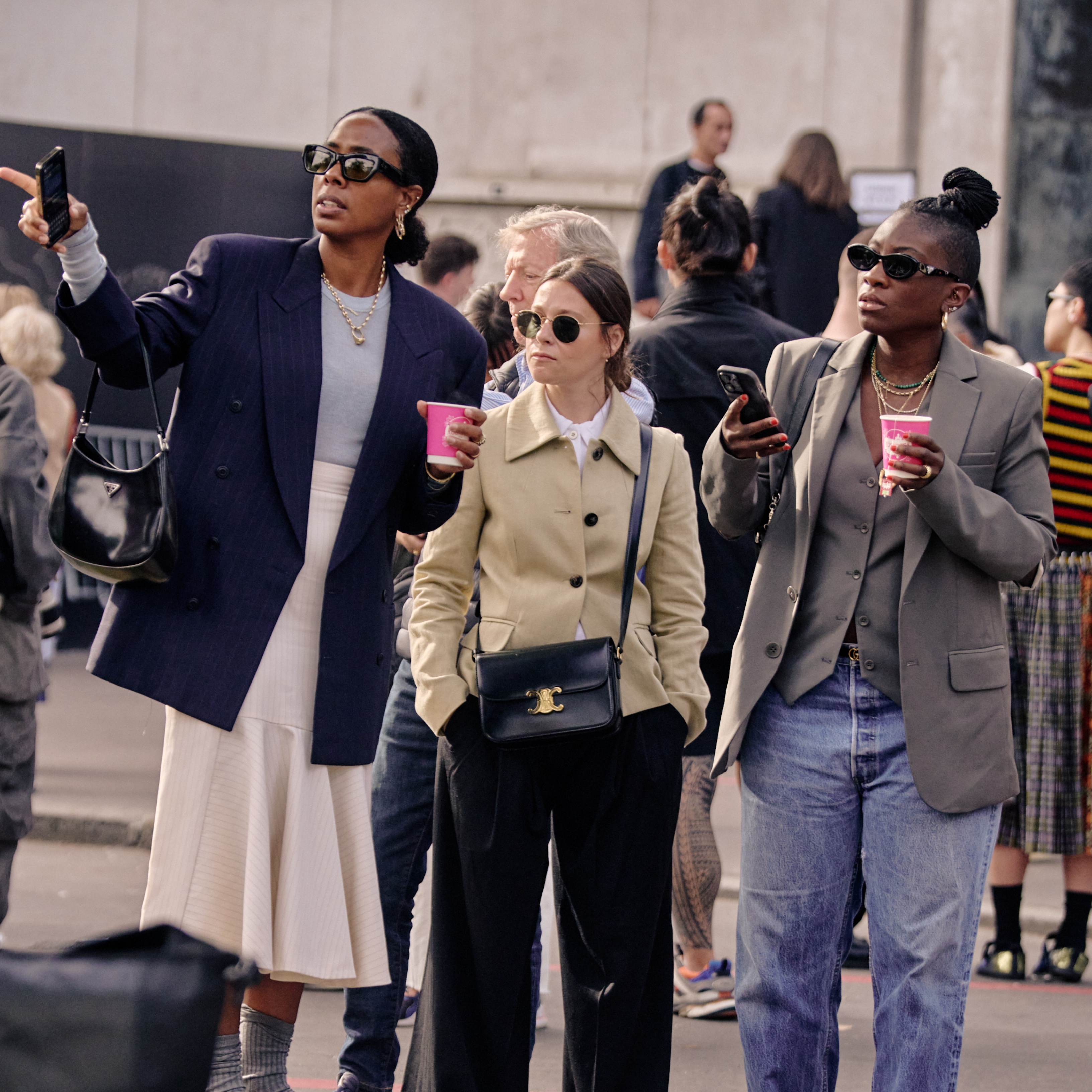 Marie Claire Editors Are Obsessed With This Cult-Favorite Sale
Marie Claire Editors Are Obsessed With This Cult-Favorite SaleSSENSE has everything a fashion enthusiast could ever want.
By Lauren Tappan Published
-
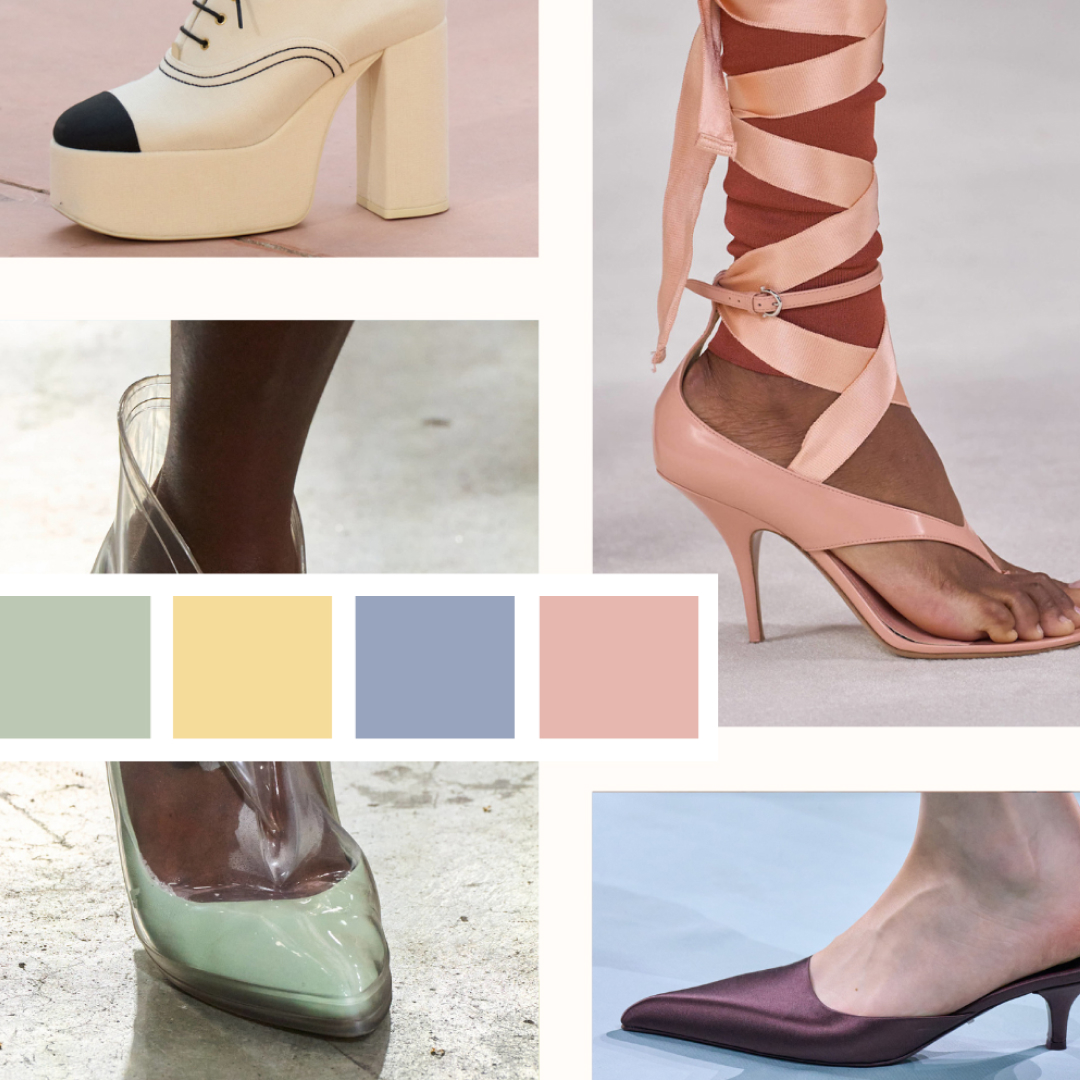 Spring 2025's Candy-Coated Shoe Color Trends Prove Neutrals Are Overrated
Spring 2025's Candy-Coated Shoe Color Trends Prove Neutrals Are OverratedBold pastels and sugar-sweet hues promise to overtake your boring shoe lineup.
By Lauren Tappan Published
-
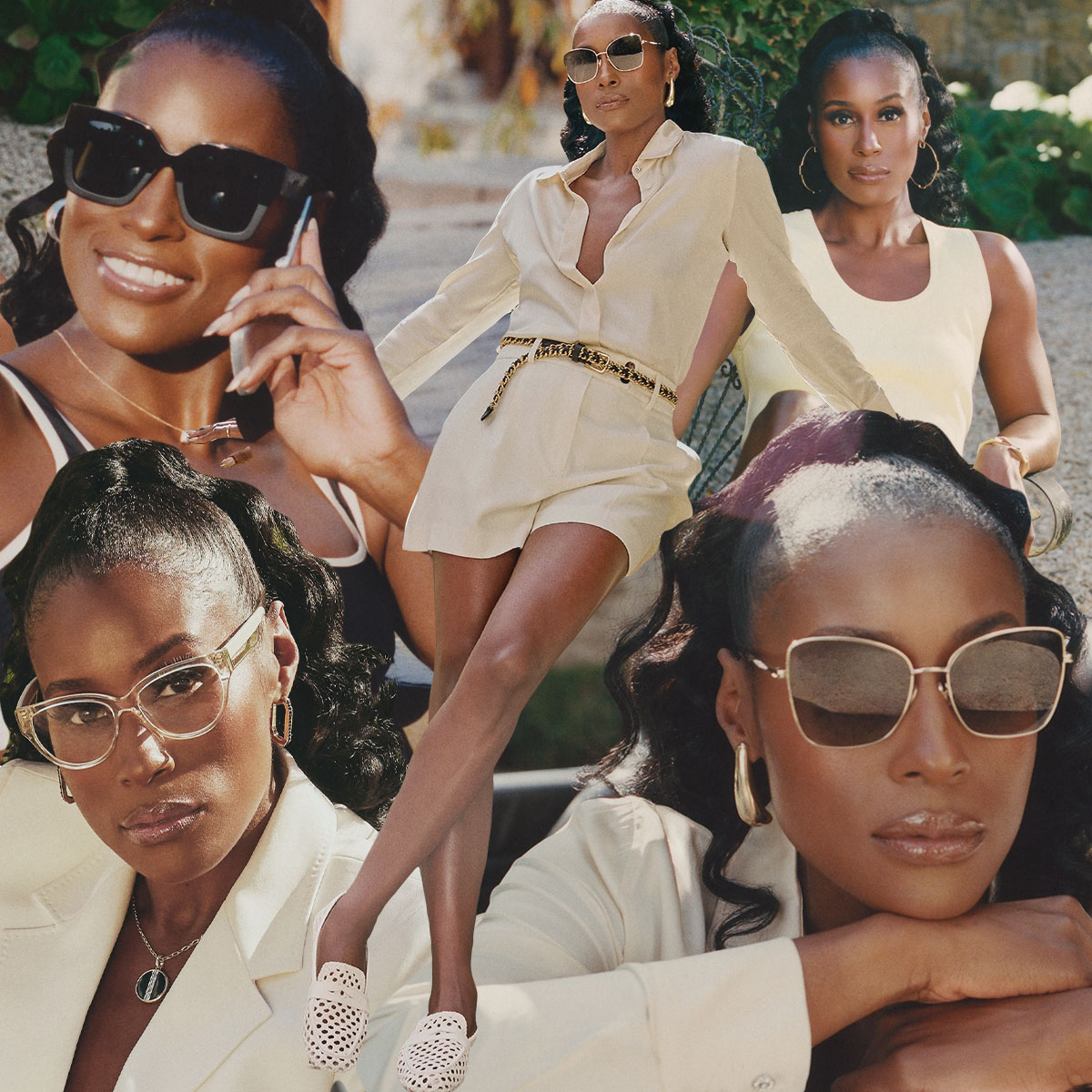 Issa Rae Is Fueling Her Mogul Era With More Me Time
Issa Rae Is Fueling Her Mogul Era With More Me TimeThe key to her success lies in self-care.
By Lauren Tappan Published
-
 13 Hailey Bieber Outfit Formulas Defining Her Laidback Personal Style
13 Hailey Bieber Outfit Formulas Defining Her Laidback Personal StyleCopy and paste to your closet.
By Lauren Tappan Published
-
 8 Women Over 60 Share Their Age-Defying Fashion Wisdom
8 Women Over 60 Share Their Age-Defying Fashion WisdomThese eight style icons prove that age-appropriate fashion is a myth.
By Emma Childs Published
-
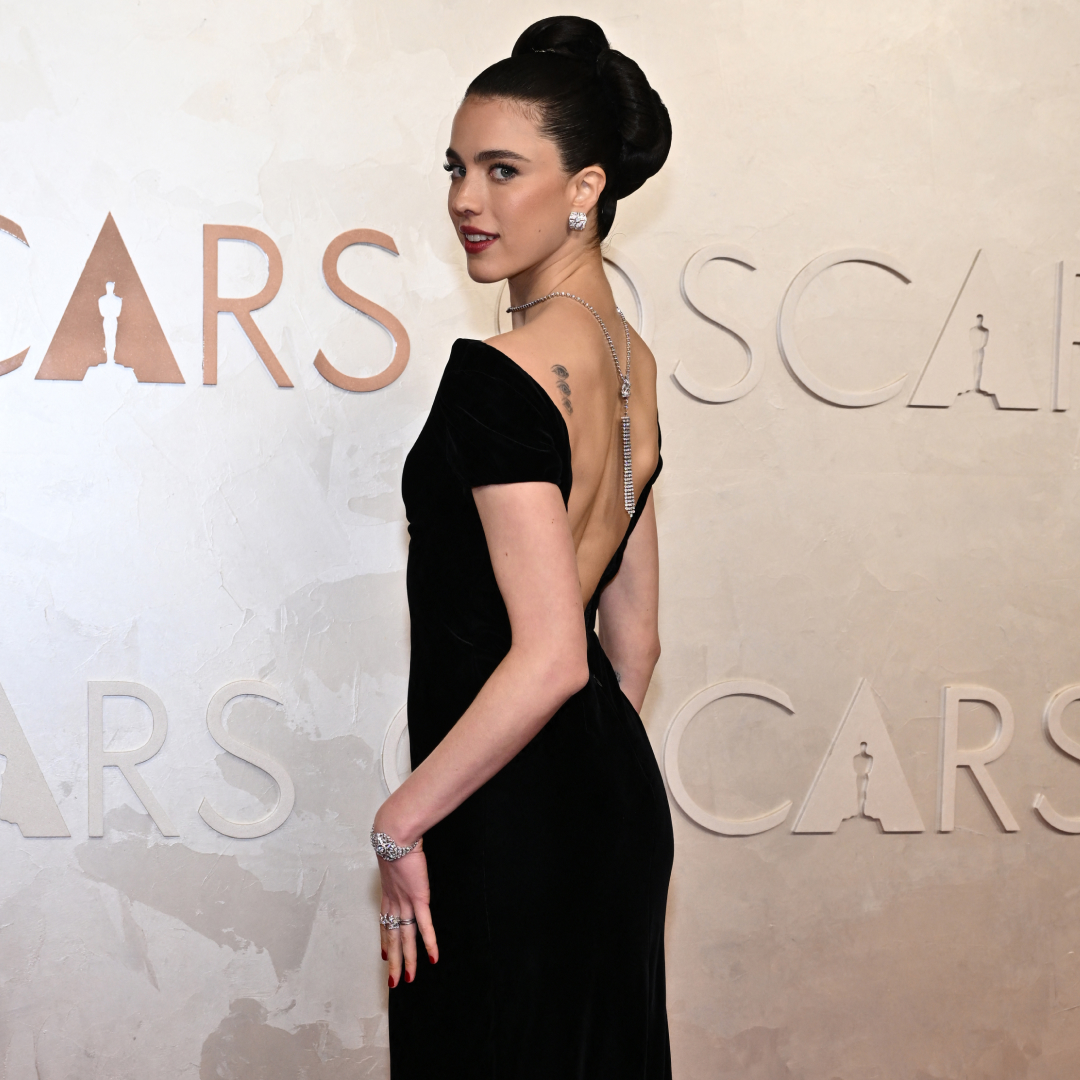 Margaret Qualley's Backless Chanel 2025 Oscars Dress Secretly Nods to 'The Substance'
Margaret Qualley's Backless Chanel 2025 Oscars Dress Secretly Nods to 'The Substance'The backward necklace is the cherry on top.
By Emma Childs Published